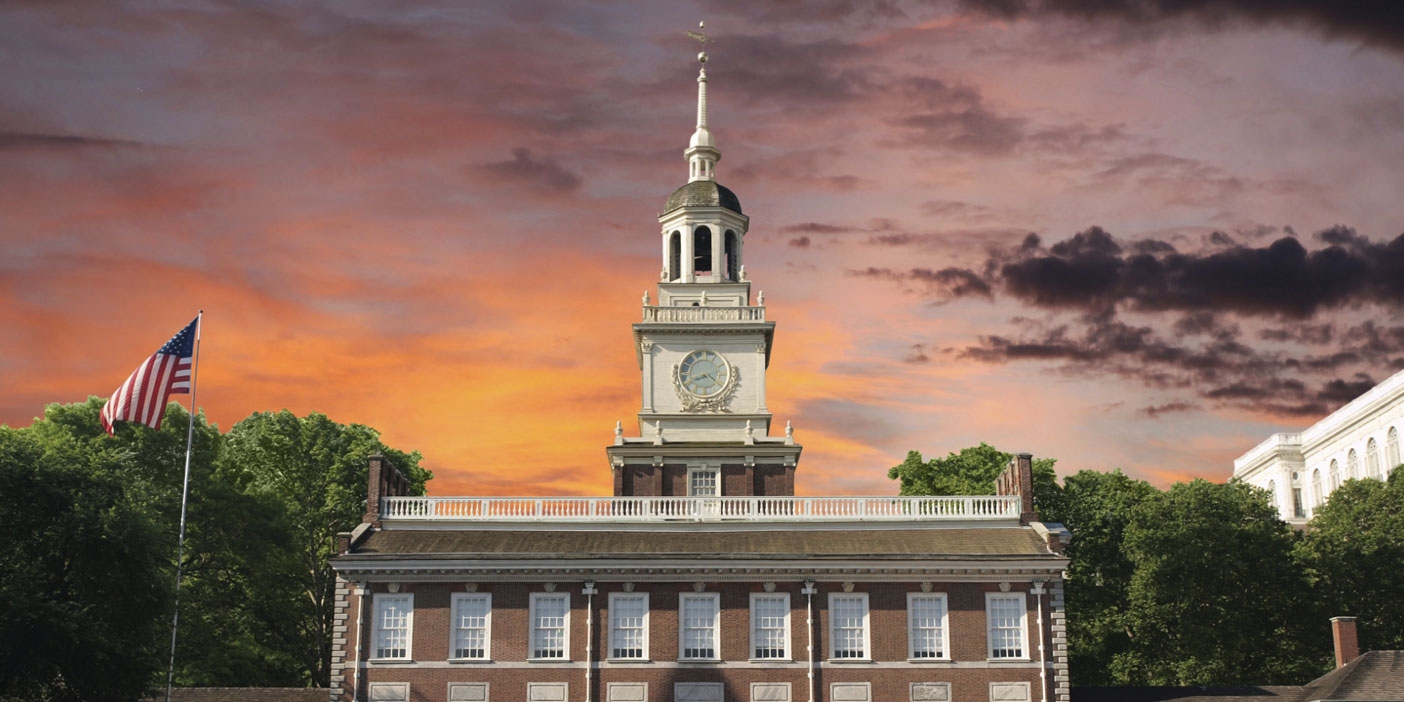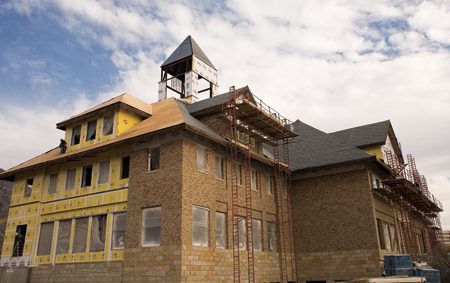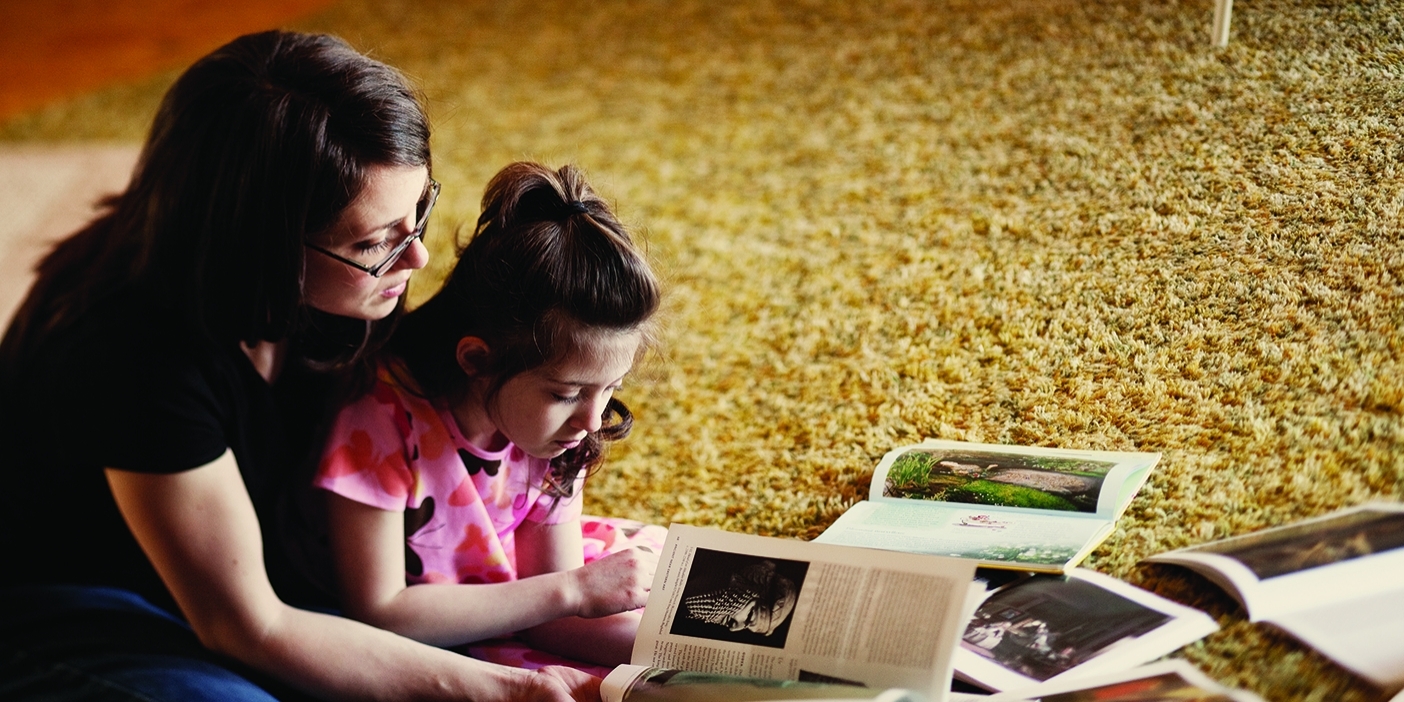
In darkness on the back of Y mountain, a BYU student learned a lesson about communication with God that would affect him and others for years to come.
By Madison U. Sowell, ‘75
One of my favorite archetypal images is that of the mountain or hill, and I am hardly alone in this fondness. The ancient Greeks had numerous mountains that doubled as evocative symbols. Mount Olympus represented the pantheon of the gods, and Mount Parnassus, sacred to the nine Muses, stood for artistic inspiration. The Bible’s mountains and hills are legion and include Mount Sinai and Mount Zion in the Old Testament and the Mount of Olives and the Mount of Transfiguration in the New Testament. We could easily add to this impressive list the Hill of Calvary and the Hill Cumorah. Dante, aware of the tradition-steeped Greek mountains and sacred biblical mounts, envisioned Purgatory as a seven-storied mountain surrounded by a vast expanse of water. In most of these cases, mountains and hills symbolically link the earthly and the heavenly, the human and the divine, this world and the next. Reaching high into the sky, mountains, like the steeples on our churches and temples, naturally draw our minds heavenward, toward God.
Not by chance, I believe, BYU is nestled at the foot of mountains, in a liminal space befitting a Zion university, a sacred space where valley floor rises to abut mountain foothills. Above them, mountain peaks reach upward and can be seen from all angles of campus, epitomizing what can transpire at Brigham Young University.
My affinity for mountains runs deep. The last photograph taken of my father and me was on a family trip to the Ozark Mountains in Arkansas one month before he was killed in a car accident. In the photo I am 8 years old, and we stand next to each other on a lookout point. The mountain setting reminds me to this day of an idyllic time from long ago. And so it happened, almost from the day I set foot on the BYU campus in August 1970, as a freshman and Latter-day Saint convert of 15 months, that I aspired to climb Y Mountain. I found particularly intriguing a majestic evergreen, two-thirds of the way up the mountain and to the far left of the block Y, that appeared to have two tops. I made one half-hearted attempt to reach the mysterious tree with freshmen dormmates George and Gene in the winter semester, but we started too late in the day and ended up spending the night about halfway up. The next morning we were too enervated and chilled to continue, and so we returned to Helaman Halls without accomplishing our goal.
In the summer term following my freshman year I had another roommate, Scott. I had received a mission call to the Italy North Mission for The Church of Jesus Christ of Latter-day Saints, and he had become engaged to marry. I was to leave on my mission in September, the month of his wedding. Jointly we decided it would be fun to have our very own bachelor party one summer afternoon by climbing Y Mountain. He got off work at noon. We had a quick lunch, packed snacks and cream soda (but nothing so mundane as water), bid adieu to his somewhat lachrymose fiancée, and took off with determination to conquer the mountain. Before we left we offered a routine prayer for the Lord’s protection and a safe return.
The trek up the mountain was hotter and more arduous than we had expected, but we persevered with the dogged determination of venturesome teenagers. Once through the scrub oaks that dotted the lower mountainside, we set our sights for the mysterious twin-topped tree. When we finally reached it, we discovered that it was actually two pines growing together. Previous hikers had left a glass vial with a stopper hanging from one of 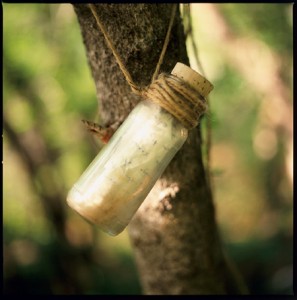 the branches. Inside were messages written for those who came afterward. Scott and I composed a few lighthearted verses of encouragement, neither of us fathoming that—but for the hand of God—those could have been the last written record we left behind. It was mid-afternoon, and the sun was well past its zenith but still fairly high in the sky. Surely there was time to make it to the top well before sundown.
the branches. Inside were messages written for those who came afterward. Scott and I composed a few lighthearted verses of encouragement, neither of us fathoming that—but for the hand of God—those could have been the last written record we left behind. It was mid-afternoon, and the sun was well past its zenith but still fairly high in the sky. Surely there was time to make it to the top well before sundown.
Without pausing to eat, we scampered toward the top third of the mountain, which we found to be full of cliffs and rocks and much more challenging. Lacking expertise in scaling cliffs, we decided it would be prudent to take as few risks as possible. Besides, Scott and I had, respectively, a marriage and a mission to look forward to. We looked for paths around and crevices through the rocks, and eventually we found and navigated them.
The view from the mountaintop proved to be spectacular. The sun was starting to set, and its rays glistened on a shimmering Utah Lake. A mountain breeze refreshed us. We sat down on a smooth slab and were astonished to see fossilized seashells and sea horses encased in the rock beneath us. We were sitting thousands of feet high on what was once an ocean floor. The thought of water made us realize that we were incredibly thirsty, almost dehydrated. Scott pulled out the two cream sodas, which had been well shaken in his backpack. As he opened his, the pressure was so great that soda splattered over his face and hands. I guffawed and promptly recreated the cream soda experience for myself by opening my pressurized can. Surely this was the good life, laughing at our silliness and enjoying the beauties of nature.
Scott and I gazed at God’s handiwork and talked of the coming changes in our lives. What effect would a mission have on me? How would marriage change him? Where would we each be in one year’s time? We chatted and watched the sun sink lower. The buildings on the BYU campus that loomed so large from the ground were minuscule from where we sat. It seemed a shame to leave this perch, high above all our earthly cares, far from the pressures of the exams that soon would be upon us. We decided to have another prayer before making our descent. This prayer was much more heartfelt and sincere; it was a prayer of gratitude. We were grateful for our friendship, for the restored Church, for our Savior, for our families, for this experience. The prayer concluded, we took in Utah Valley at dusk. Lights were beginning to come on, but it was still light enough to see easily the way down the mountain. We reasoned that it would take us very little time to make the descent. But then one of us suggested that we take an alternate route home, down the back side of the mountain into the breathtakingly beautiful Rock Canyon. It seemed like such a great idea, and we had few clues as to what lay ahead of us.
The descent went rapidly at first, but we were surprised at how much darker it was on the northeastern side of Y Mountain. The setting rays of the sun did not penetrate here, and in a matter of minutes twilight became night. Then it was pitch-dark, and there was no moon yet in sight. The little flashlight we had brought got weaker and weaker until finally it was of no use and was turned off to allow us to use both hands to scoot down the rocky mountainside. We kept going, but at an ever-slower pace. Suddenly Scott stopped and said he had a feeling that we should catch our breath.
By this point I could not see even two feet in front of me, nor could he. I knew he was there because I could hear him speaking. We were on a steep incline that appeared to be a rock slide. Scott felt around and found a fairly large rock to sit on. He plopped down on it, and it came loose and slipped out from under him. To this day I can remember the sound of that rock as it slid and scraped against the ground for a yard or so. Then, strangely, the scraping sound stopped; there was an abrupt and eerie silence, followed by the distant sound of the rock crashing against other rocks many, many yards below. We had descended to the very edge of a steep cliff. We both picked up pebbles and threw them in front of us. Once again, silence was followed by the faint sound of our pebbles striking rocks quite a distance below. Had we not stopped when we did, it would have been our bodies crashing at the base of the cliff. Scott’s impression to halt our descent had been inspired. We trembled as we contemplated what would have happened had we pressed forward with the foolhardiness that had characterized much of our day together.
I sat down and carefully edged myself to the left. I felt a perpendicular wall of solid rock. Behind us was the steep slope we had just come down. Scott edged himself to the right and encountered a thick outcropping of scrub oak, seemingly impenetrable. It appeared that we were on a sloping ledge that led to a dramatic precipice. Exhausted and shaken, neither of us had the desire to crawl back up the mountain. We huddled together and concluded that it was time to offer a third prayer, but this one with “sincere heart, with real intent” (Moro. 10:4). And so two 19-year-old BYUstudents knelt in the dark, on the edge of an abyss, and poured out their hearts to God, seeking forgiveness for foolishness and inspiration as to how to get out of this self-created predicament. We each prayed in turn. Then we waited and listened for a response. We had faith that it would come. We saw God’s hand in stopping us before disaster had struck. We knew we had missions to accomplish before we died.
God answers prayers and gives revelations in diverse ways. He has done so via theophanies, appearing personally to Moses and Joseph Smith; he has done so via heavenly messengers, such as Gabriel and Moroni; he has done so through an audible voice and by writing with his finger; he has done so through the instrumentality of other persons. But most often it is through “a small voice,” a distinct and comforting impression that when followed leads to a stronger confirmation of his will. And so it was on that dark night. We both felt impressed to turn right and head into the scrub oak, Scott leading and I holding on to his belt to try to prevent him from falling. We tried the flashlight again and were amazed and delighted to discover that the battery seemed to have been recharged; the light shone more brightly than before. Deeply sobered and profoundly grateful, we proceeded cautiously and prayerfully. Before long we made it to the floor of the canyon, and within an hour or so we were back in our dorm room, eager to offer further prayers of gratitude.
In the intervening 30 years, I have reflected often on the power of prayer and how essential it is that we learn to pray with sincerity and specificity. I have also often reflected on the almost unique juxtaposition of Y Mountain and BYU that creates an environment wherein a couple of college freshmen who found themselves in difficulty, even if of their own making, would turn to their Father in Heaven in prayer for assistance.
Throughout my adult years I have attempted to put into practice what I discovered that dark, prayerful night as I descended into Rock Canyon. The lesson learned about the necessity of calling on God for illumination, if we would be saved, has rescued me and others from more than one peril at key junctures in my personal, professional, and ecclesiastical life. I should like to illustrate, with a trio of vignettes, that prayer and attention to the Spirit can help one conquer any mountain and navigate around any cliff.
As a returned missionary facing graduation from BYU, I consulted with trusted mentors, analyzed pros and cons, and then prayed sincerely and specifically for guidance as to which graduate school I should attend. I had received flattering offers from a few public universities that would have paid me generously to enroll in their doctoral programs. I also had been accepted at an Ivy League school, but without any offer of financial aid for the first two years. All the programs were academically solid and appeared comparable in terms of placing their graduates. Given the poor job market for new PhD graduates in foreign language and literature that characterized the late 1970s, logic strongly suggested avoiding the costliness of a private university. After much pondering, however, the undeniable impressions of the Spirit were that I should attend the costly private school.
From my limited perspective, the danger was that of going to school for years, falling into debt, and then being without a job in my field. Nevertheless, based on the clear answer to my prayers, I took a leap of faith and turned down the offers from the other schools. Almost immediately miracles began to happen to confirm the rightness of my decision. A relative who had come into an inheritance sent me an unsolicited check that covered much of the first year’s tuition. Soon after arriving on the campus where I was to study, I was invited by an elderly retired professor and his wife to live with them; they set rent at only a dollar per day, in exchange for the assurance that if they needed anyone in the middle of the night they could call on me. Because their house was across from the LDS chapel and only a few minutes from campus, I did not need a car and could forego that expense. And so it went, with similar miracles each year I was in graduate school. When I graduated I had not accumulated a penny of educational debt.
As the 1970s drew to a close, the academic job market worsened. When it came time to apply for a teaching job, I found that positions were few and far between. But what had also happened was that in this worsening market, degrees from my school were relatively more desirable: colleges and universities that were hiring were favoring job candidates from the long-established institutions. And so I ended up with more than one enticing professorial post being offered me. I came to realize that the danger I had faced—the hidden precipice I had not seen—really had not been that of going into debt by attending an expensive school and then failing to obtain a job, but rather that of selecting an ostensibly comparable graduate program that in the end would have shortchanged me in a highly discriminating job market. Listening to the quiet voice of the Spirit had paid, once again, an important dividend.
This brings me to my next vignette. Once established as a professor at BYU, I developed a pleasant and satisfying association with the Honor Code Office. In fact, one of the reasons I elected to teach at BYU was because of the code of conduct to which students subscribed. For many years I have included a statement supporting the Honor Code and the Dress and Grooming Standards in my course syllabi. Most students appreciate my staunch support of the code and the standards, but occasionally I have encountered a student who did not share my enthusiasm. A returned missionary whom I will call Jim fell into the latter category.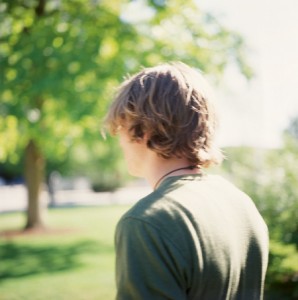 Jim’s parents were divorced, and his father was not a member of the Church. He had served a two-year mission but had been plagued with health problems. He carried a chip on his shoulder. Tall and smartly dressed, he appeared in my Italian class on the first day of the semester with his handsome brown hair cascading over his ears and shirt collar. I did not say anything to him personally about the grooming standards, but I made a point of sharing a statement about how I expected all my students to be persons of integrity and to maintain their agreements to abide by the dress and grooming standards. In the past I had found that this was usually enough to correct most problems. At the next class period, however, I saw that Jim’s hair was uncut. When the class ended, I spoke with him briefly and informed him cordially that he needed to get a haircut in order to comply with the university standards. He did not take my comment well. The next time he came with his hair combed in such a way that it was not as obvious that he was still violating the grooming standards; nevertheless, I knew that he was not being compliant, and he knew that I knew. Unaccustomed to outright defiance, I decided to invite Jim to see me in my office.
Jim’s parents were divorced, and his father was not a member of the Church. He had served a two-year mission but had been plagued with health problems. He carried a chip on his shoulder. Tall and smartly dressed, he appeared in my Italian class on the first day of the semester with his handsome brown hair cascading over his ears and shirt collar. I did not say anything to him personally about the grooming standards, but I made a point of sharing a statement about how I expected all my students to be persons of integrity and to maintain their agreements to abide by the dress and grooming standards. In the past I had found that this was usually enough to correct most problems. At the next class period, however, I saw that Jim’s hair was uncut. When the class ended, I spoke with him briefly and informed him cordially that he needed to get a haircut in order to comply with the university standards. He did not take my comment well. The next time he came with his hair combed in such a way that it was not as obvious that he was still violating the grooming standards; nevertheless, I knew that he was not being compliant, and he knew that I knew. Unaccustomed to outright defiance, I decided to invite Jim to see me in my office.
Our interview was not easy for either of us. He was as determined to keep his hair at the length he deemed fashionable as I was to see him conform to BYUstandards. After a number of chats before and after class, in the corridors, and in my office, I reported Jim to the Honor Code Office. He was summoned to appear before a counselor and was told to cut his hair or withdraw from the university. He cut his hair. His sulking presence in class the next day made a negative impression on all present. He glared at me, he smirked at me, and he made it clear that he was not happy. Nevertheless he remained in the class, completed his assignments, and received a passing grade.
Although Jim did not take any other class from me, our paths crossed frequently in subsequent semesters because of the part-time campus job he had. Like Samson, he grew his hair longer and longer. I would remind him of his Honor Code commitments when I would see him. He would not do anything about his hair. I would report him to the Honor Code Office. He would receive another ultimatum and then cut his hair. This scenario repeated itself more times than I care to remember. Years passed and Jim graduated from BYU and found employment in Utah County. I lost direct contact with him.
One night just before 10 p.m., my home phone rang. The voice on the other end said, “This is Jim. I need help. I am surrounded by darkness.” At first I did not know who it was because of the commonness of his name, but then it dawned that it was my former student. He had been deeply depressed and had not eaten for a couple of days. He was too weak to drive his car. I asked him where he was and told him I would retrieve him. I brought him home, and my wife prepared a simple meal for him and then left us alone to talk. Metaphorically speaking, he had been crawling down the back side of his own mountain in the darkness of bad choices. After breaking up with his girlfriend, he had stopped just short of a gaping abyss. He feared falling or throwing himself into the black hole, but he did not know how to get out of the dangerous predicament in which he found himself. He asked me to help him. I asked why he had called me, the professor who had repeatedly reported him to the Honor Code Office. He looked at me and stated simply, “I always knew that you cared.”
By chance, the bishop of the young adult ward in whose boundaries Jim was living was a campus colleague and my trusted friend. I introduced them, and my former student began the long road back to full activity in the Church. One of the happiest days of my teaching career occurred more than a year later when Jim asked me to accompany him to the temple, his first time back in five years. As we sat in the celestial room of the Provo Temple, not far from the mouth of Rock Canyon, I felt the sweet spirit of the Holy Ghost—the same Comforter that I had felt many years before when my roommate and I had paused to pray while facing our own precipice.
The final story I share involves my experience as bishop of a BYU off-campus ward and illustrates perhaps most pointedly what I learned about our need to seek direction from God, not only for ourselves but also for those for whom we have stewardship responsibilities. For four years I served simultaneously as both a bishop and a BYU department chair. In this dual role I interacted closely with hundreds of students. Many times students and ward members who came to see me would sit in a chair in my office directly in front of a large window that looked out on Y Mountain. I would look at them, listen to their problems or concerns, and then gaze beyond them to the mountain I had climbed many years before.
December always brought the largest number of students to my office. During the day I had students petitioning for various matters, and at night I had ward members coming in for tithing settlement. Time at home became rarer and more precious. One late wintry afternoon, I found myself hurrying to finish my last bit of paperwork so I could go home and be with my family. The sun was casting its setting rays on Y Mountain. I was nurturing a prayer in my heart that my ward members would make it home safely for the holidays. By then, all should have left for Christmas break. Suddenly a clear impression of the Spirit came that I should drive through my ward boundaries south of campus before heading north of campus to my home. I dismissed the thought for two reasons: first, I wanted to be home with my family; second, it was likely that none of my ward members would still be in the apartment area south of campus. The impression came a second time, and I brushed it off as I packed my briefcase. When the words “Go to your ward boundaries” lodged in my mind a third time, I decided to obey.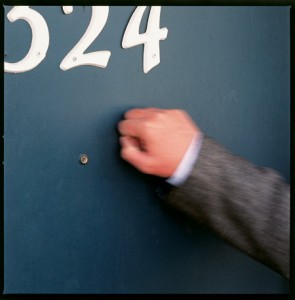 I drove through the block containing my ward but did not see anyone outside or inside the apartments. My first thought was, Why did I come? The answer came, “Park the car and get out.” I did and walked around the parking lot in the middle of a block of houses and apartment buildings. I was preparing to leave when I noticed a light inside an apartment on the top floor of one of the buildings. I felt drawn to the light even though I could not remember who lived in that particular apartment. I knocked on the door, and a middle-aged woman whom I did not recognize opened the door. I introduced myself as Bishop Sowell, and she seemed startled—almost as if she were seeing a ghost. She turned around and emotionally exclaimed to her daughter, a young woman whom I recognized as a non-BYUstudent living in my ward, “It’s your bishop!”
I drove through the block containing my ward but did not see anyone outside or inside the apartments. My first thought was, Why did I come? The answer came, “Park the car and get out.” I did and walked around the parking lot in the middle of a block of houses and apartment buildings. I was preparing to leave when I noticed a light inside an apartment on the top floor of one of the buildings. I felt drawn to the light even though I could not remember who lived in that particular apartment. I knocked on the door, and a middle-aged woman whom I did not recognize opened the door. I introduced myself as Bishop Sowell, and she seemed startled—almost as if she were seeing a ghost. She turned around and emotionally exclaimed to her daughter, a young woman whom I recognized as a non-BYUstudent living in my ward, “It’s your bishop!”
I was ushered in, and soon I knew why I had been so strongly impressed to drive south rather than north. The student was pregnant out of wedlock and had informed her heartbroken mother, who was praying fervently for help. The daughter was deciding what to do about the pregnancy, and the mother—a faithful Latter-day Saint—was desperate for her child to make the right decision, perhaps the most important of her life. The mother told me, “I had just asked my daughter whom she trusted to advise her, and then you knocked on the door. Bishop, thank you for coming at this precise moment.” Deeply humbled, I sat down and lovingly counseled the daughter. Because my wife and I have adopted a child, I was able to bear personal testimony of the rightness of placing a child for adoption when the biological parents do not or cannot marry. I also explained the repentance process and the way back to God. Because of my miraculous appearance at just the right time, the daughter was more receptive to counsel. In the end, she placed the baby for adoption with a worthy Latter-day Saint couple. The young woman had stumbled to the edge of a precipice, but she did not fall into the abyss.
As I left the apartment, I discovered that night had fallen. Soon the moon would shine on a snow-covered Y Mountain. While driving home, I expressed a prayer of gratitude. The lesson I had learned as a BYU freshman almost three decades previously about prayer and our need to follow the dictates of the Spirit had once again borne fruit and, in this case, saved someone else.
Madison U. Sowell, a BYU professor of Italian and comparative literature, returned in 2001 from presiding over the Italy Milan Mission.
On Measuring Flour and Forgiveness,” a 1996 devotional address by Madison Sowell can be read online at speeches.byu.edu/devo/96-97/sowellf96.html.







